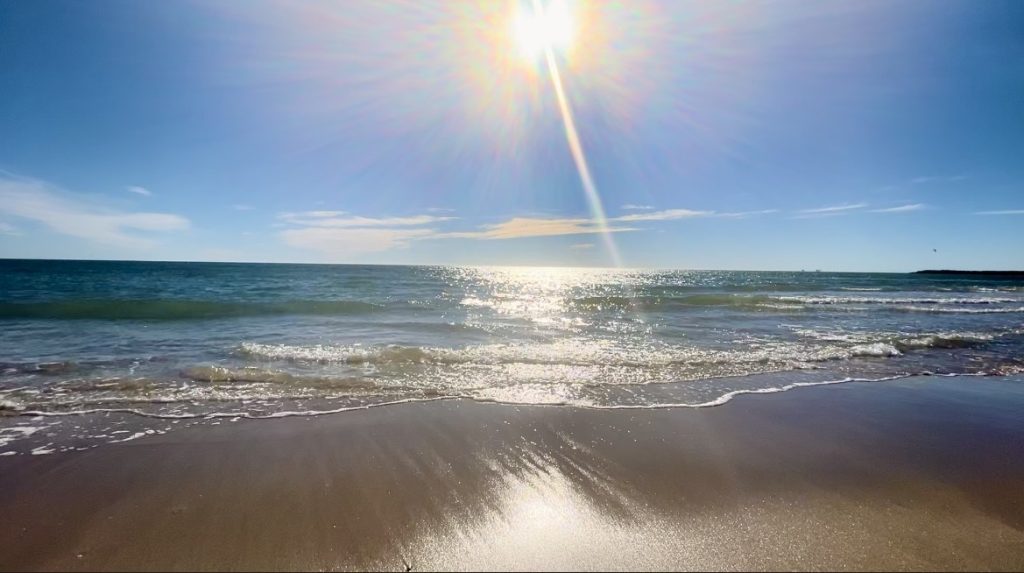
The Sea of Cortez. It is also called the Gulf of California. Another even lesser-known name is the Vermilion Sea. Whichever name you use does not matter. Instead, what is vital are the valuable roles the sea plays with Rocky Point, Mexico, and the planet earth. This includes an array of areas such marine biology, geology, the climate, and the global economy.
Sea Of Cortez Puerto Peñasco

The Gulf of California is the body of water that separates the Baja California Peninsula from Mainland Mexico. It is also what separates Puerto Peñasco as a destination from the rest of the state of Sonora.
The small town couldn’t make a single wave in tourism without it. This is because the sea is the biggest physical and emotional reason people visit. Rocky Point is only relevant because it is located on the northern shore of the Sea of Cortez.
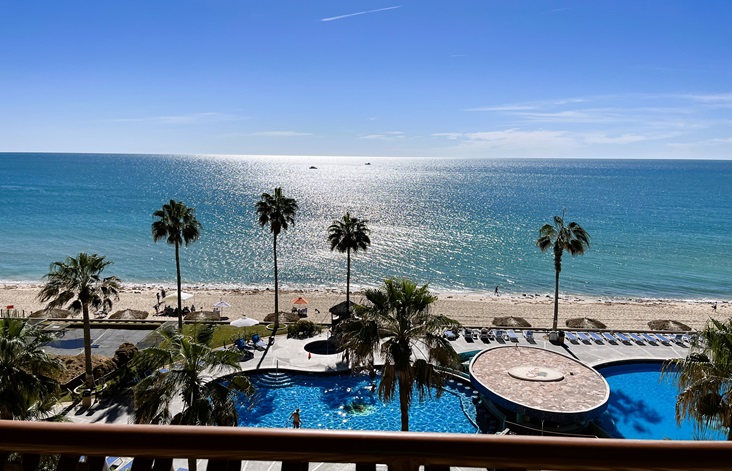
Now, let’s take that point one step further. The sea is the only reason the town has a getaway beachfront paradise such as the Sonoran Sun Resort. It is why there is Sandy Beach, whale watching, sunset cruises, commercial and sports fishing industries, and more. Plus, there is the positive impact seaside. From stores to restaurants, everything related to Rocky Point as a popular tourist destination is because of the Sea of Cortez.
Yes, it is that important. The sea carries the local community and economy.
Gulf of California Global Impact
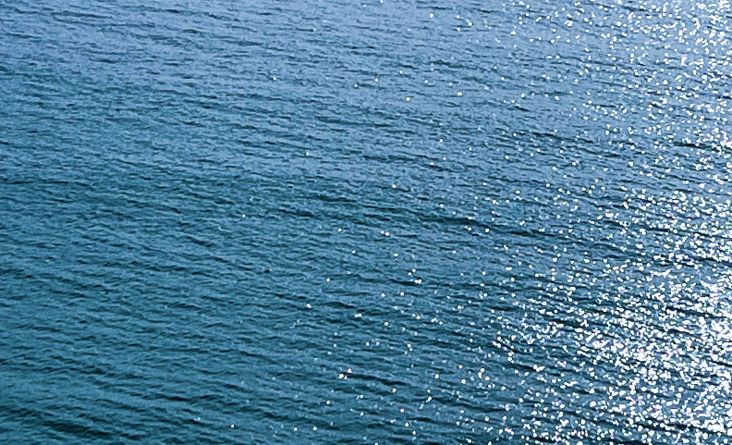
Various marine and coastal ecosystems also play key roles globally. The sea has a significant impact on the weather, its habitat, and humans as well. Such a large body of water is a large storage source of solar radiation, and it distributes heat and moisture. The sea is connected to rivers, estuaries, and islands. Birds of all feathers flock to it as home. Meanwhile, inside the sea, there are resident species ranging from tiny plankton to whale populations.
UNESCO is the acronym for the United Nations Educational, Scientific and Cultural Organization. Its goal internationally is to promote peace and security. One major aspect of that is conservation.
World Heritage Site and Biosphere Reserve.
UNESCO declared the Sea of Cortez a “World Heritage Site and Biosphere Reserve.” The experts of this cooperative effort called the sea a “natural laboratory” for study and investigation. They claim this because of one of the most biologically diverse marine environments in the world.
In 2019, the Gulf of California was added to the List of World Heritage in Danger. This distinction was needed because of the imminent extinction of an endemic porpoise named the vaquita. The sea is also home to many other rare and endangered marine mammals.
Sadly, human error is again a primary cause for such environmental changes. Water pollution is a problem in places. However, “overfishing” and trawling (dragging a net across the sea floor) are two of the main reasons these dire concerns exist.
Because of its local, regional, and global importance, don’t be fooled by the sea being labeled as a “marginal sea.” This term strictly applies to a part of an ocean found between the coastal zone and open ocean. This means it is an area which is partly enclosed by land. And therefore, a marginal sea is not as big and deep as the open ocean.
Sea of Cortez History
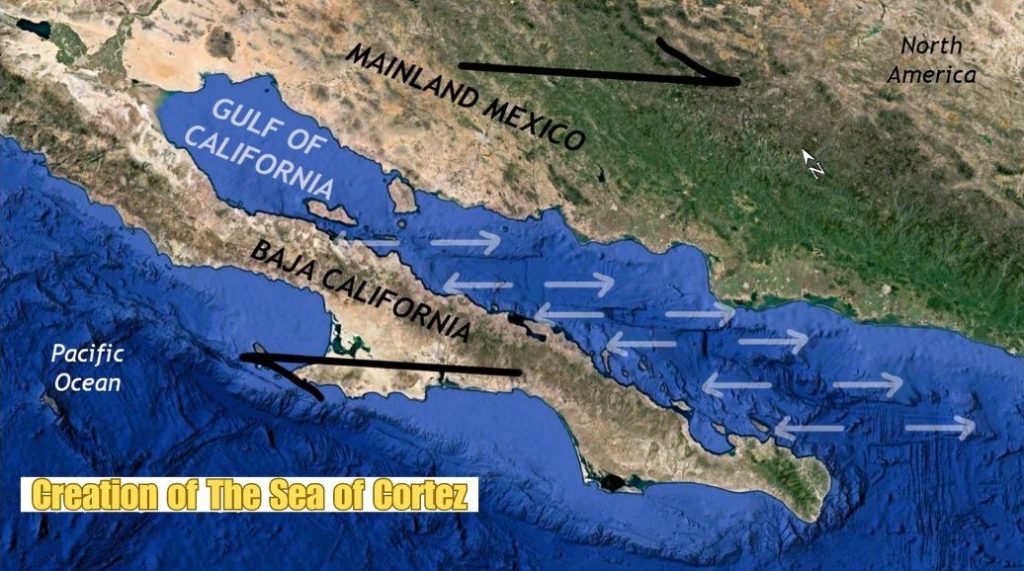
According to experts, the process for the sea to form began about 12 million years ago. It happened as Baja California began to gradually separate from Mainland Mexico. This was in reaction to the movement of tectonic plates in the earth. Halfway through that process, the Pacific Ocean waters basically filled in that gap from the separation.
Therefore, the Sea of Cortez / Gulf of California is around 6 million years old. Because of its youth, it owns the right to brag about being the youngest sea in the world.
In recent times, the Mexican government officially declared the sea as The Gulf of California. Previously, it was named for Hernán Cortés. He was the Spanish conquistador who took control of Mexico in the mid-1500s after conquering the Aztec Empire.
Cortés sent explorers to the sea with great interest and curiosity. Many other expeditions from the United States and around the world have followed in the centuries since.
A couple of very well-known men helped to make the Sea of Cortez more of a household name. Popular author John Steinbeck described the gulf as being “ferocious with life.” Meanwhile, there was French oceanographer and TV star, Jacques Cousteau. Known around the world for his work, Cousteau called the sea, “The Aquarium of the World.” This compliment is still alive and well-remembered today.
Sea of Cortez Statistics
The long and narrow sea runs 700 miles. It also goes from 30 miles wide up to 150 miles wide.
The surface area of the sea is roughly 62,000 square miles.
At its deepest point, the Sea of Cortez is more than 9,800 feet below the surface. This is just about twice its average depth of 4,920 feet.
The sea is much shallower in the northern portion where Puerto Peñasco is located. Here the water rarely runs deeper than 600 feet.
The water temperature in the sea can generally drop to a low in the mid 40’s in winter. During the summer months, the water temperature can reach the mid 80’s.
Total coastline area of the sea covers some 2,500 miles (about the width of the United States).
The sea has 3 types of coastal shorelines. Rocky shores, sandy beaches, and tidal flats.
4 Mexican states have coastal land within the gulf. They include: Sonora, Sinaloa, Baja California Norte, and Baja California Sur (south).
The Sea of Cortez has 244 islands, including 37 major islands.
Its 695 vascular plant species is the largest on the World Heritage List.
Nearly 900 different fish species. 10% of these are considered endemic species. The term means they can only be found in this place.
Marine Life
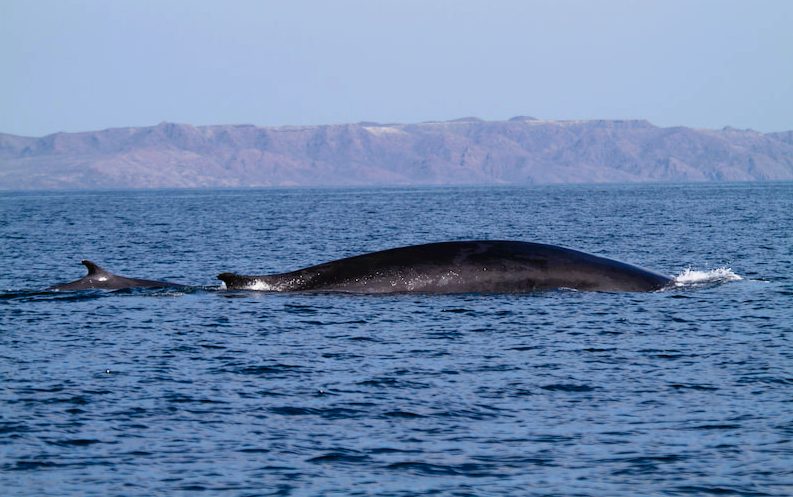
The rich and diverse ecosystem of the Sea of Cortez has created a unique, real-life water wonderland. The sea is home to literally thousands of sea birds, fish, and mammal species. Many of these are considered endemic species. The term means they are only found in this place.
A sea’s faunal regions are determined by the specific types of animals found there. The Gulf of California has 3 of them. They are called the Northern Gulf, Central Gulf, and Central Gulf.
The variety of sea creatures swimming about in the sea is too long and wide-ranging to list. So, here are some examples by size.
Sea of Cortez Inhabitants
Extra-small: thousands of species of micro-invertebrates and plankton.
Small: anchovies, sardines, and shrimp.
Medium: sting rays, sea turtles and sea lions.
Large: Sharks and more sharks including Bull Sharks, Great White, Hammerhead, Mako, and the gentle giants, Whale Sharks.
Extra-large: Blue whales, Fin whales, California gray whales, Humpback whales, and Orcas.
Sport fish such as dorado and striped marlins are prize catches. Meanwhile, the variety of tasty treats includes grouper, mackerel, snapper, triggerfish, and yellow tail.
Specifically, one can easily call the Sea of Cortez a haven for dolphins and whales. This is because about 35% of the world’s populations of dolphins and whales can be spotted here.
Now if all that is not impressive enough, the gulf also features a living coral reef roughly 20,000-years-old. It is protected by UNESCO in the reef of the Cabo Pulmo Marine Reserve. Mexico also made the area a national park.

